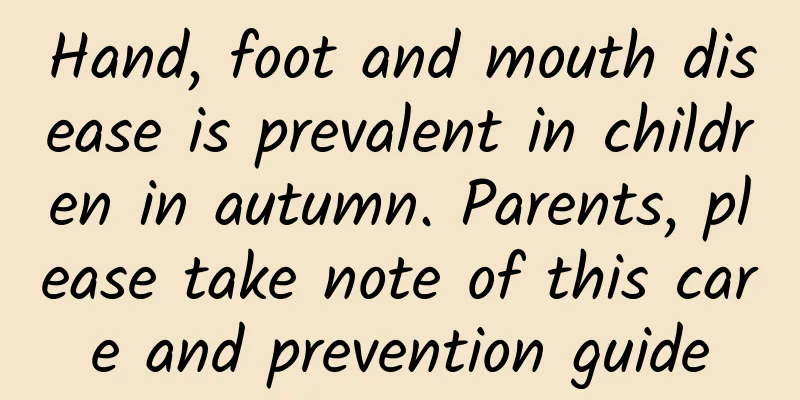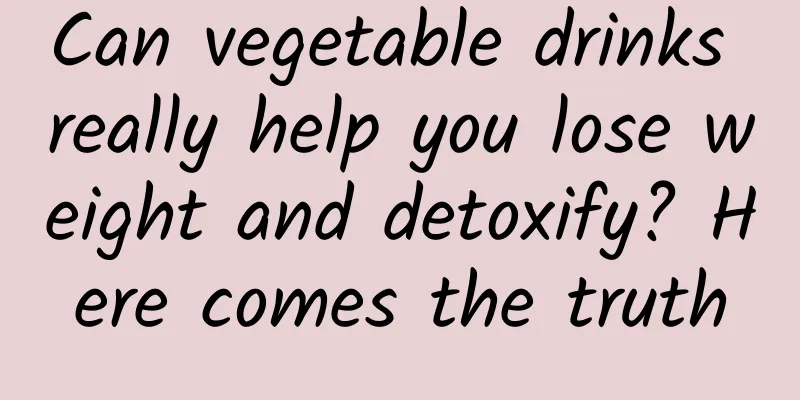Hand, foot and mouth disease is prevalent in children in autumn. Parents, please take note of this care and prevention guide

|
In the autumn, the children all return to school and start their campus life. Autumn is the peak season for many infectious diseases, and schools are also places where clustered infectious diseases are prone to occur. Especially for some kindergartens and lower grade children, it is very important to do a good job in preventing campus infectious diseases. What is Hand, Foot and Mouth Disease? Hand, foot and mouth disease (HFMD) is a highly contagious, acute, febrile, rash-causing infectious disease primarily caused by the coxsackievirus. HFMD usually occurs in children under the age of 5, but it is important to note that people of all ages can be infected and then pass it on to children. Coxsackievirus can be transmitted through direct contact, such as contact with an infected person's unwashed hands or contact with objects contaminated with feces. The virus can be transmitted through the saliva, feces, or respiratory secretions of an infected person [1]. What are the symptoms of hand, foot and mouth disease in babies? For common cases, symptoms begin to appear 3 to 6 days after the initial infection. Children may experience fever, cough, runny nose, and loss of appetite. Fever and sore throat are usually the first symptoms of hand, foot and mouth disease. Later, scattered red rashes and herpes may appear on the hands, feet, mouth, buttocks and other parts of the child. In addition, children may also experience symptoms such as headache, irritability, mouth ulcers, and drooling. In most cases, the entire course of the disease ends in about 1 week [1]. How to prevent hand, foot and mouth disease in children? Hand, foot and mouth disease is mainly transmitted through contact. The disease can be spread by contact with an infected person's nasopharyngeal secretions, saliva, blisters or contaminated objects. Therefore, developing good hygiene habits and washing hands frequently are necessary measures to prevent hand, foot and mouth disease. Children should be taught the correct way to wash their hands at home, and told to wash their hands frequently at school, after going to the toilet, before eating, and after activities in public places. Children should be taught not to put their hands or other objects in or near their mouths, and not to share towels and personal items with others. When coughing or sneezing, cover your mouth and nose with a tissue, put the used tissue in a covered trash can, and wash your hands in time afterwards. Schools and other educational institutions should regularly disinfect areas where children live. Some children's toys, equipment, and commonly used items should also be disinfected regularly. When a hand, foot and mouth disease outbreak occurs in a school or institution, group activities should be avoided and the flow of people should be minimized. Parents should also pay attention to the disinfection of daily necessities at home. Towels, tableware, and drinking utensils should be boiled for 20 minutes or soaked in disinfectant solution; daily utensils, toys, tables and chairs should be wiped and disinfected with disinfectant solution; clothes, sheets, etc. should be exposed to the sun [2]. If a child has symptoms such as a fever or sore throat, classes should be suspended and the child should be isolated. Once diagnosed, the child should be kept at home for care and treatment to avoid large-scale infection. The child is considered cured when the rash subsides, the herpes forms scabs, and the related symptoms disappear. The general isolation period is 2 weeks. The child's room should be kept clean and well ventilated. The child should avoid eating cold, spicy, salty and other irritating foods and drink more warm water[2]. Autumn is the season when hand, foot and mouth disease is prevalent. During this period, parents should avoid taking their children to public places where people gather, and teach their children to wash their hands frequently and pay attention to hygiene at school. Schools and families should also do a good job of disinfection to provide children with a healthy and safe environment. References 1. Wang Weiping: Pediatrics. 8th edition: Pediatrics. 8th edition; 2013. 2. Wu Yinping: How to prevent and treat hand, foot and mouth disease. Chinese Journal of Disability Medicine 2010, 18(2):163-163. |
<<: “Blue Food” helps build a healthy, sustainable and equitable food system
>>: Why is the essence oily? What else should I apply after applying the essence?
Recommend
Why do women develop spots after giving birth?
After giving birth, women's bodies will be da...
When to add bamboo fungus to soup (add it three minutes before boiling for higher nutritional value)
...
Transsion Financial Report: From January to June 2022, Transsion's operating income was 23.109 billion yuan, a year-on-year increase of 1.12%
Recently, Transsion Holdings, known as the "...
Do I need to do mammography for breast nodules?
Some women are very scared when they are found to...
Vulvitis symptoms
Everyone is afraid of suffering from gynecologica...
What to do if ovaries are enlarged after egg retrieval?
The health of the ovaries is very important for w...
Fallopian tube dredging
In daily life, women also need to pay attention t...
What is the Earth Blushing based on? Where can I read the novel Earth Blushing?
Due to the extension of the holiday, more and mor...
How to treat a hypoechoic mass in the right breast?
Women may develop various breast diseases, such a...
Is BB cream effective in concealing blemishes? How to choose the color of BB cream?
BB cream is a non-toxic white inorganic pigment w...
What to do if you have calcification in your breast? Six steps to help you
Breast calcifications are caused by the appearanc...
How to treat mild cervical erosion in married women
It is very common for women to suffer from cervic...
Did North Korea donate money to China for the epidemic? What supplies did North Korea donate to Wuhan?
At present, the epidemic broke out in South Korea...
Why does it hurt when women urinate?
Urination is something people need to do every da...









